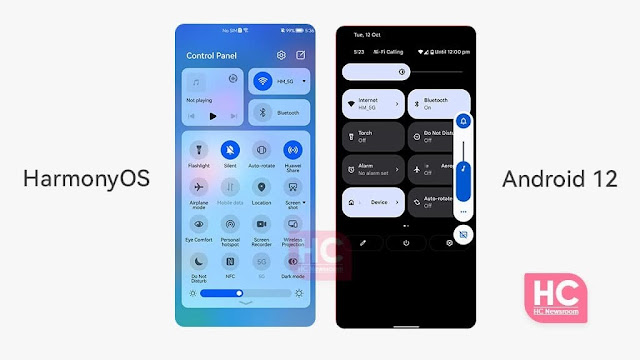Google Android 12 is the next operating system that comes with various new features. Android is open source and provides different types of customizations for the smartphone makers to customize Android and make it as a base of their custom software skin just like the Huawei EMUI.
However, if you are coming from any phone such as Huawei, Samsung, and others, you may find that Pixel device has minimized and a limited amount of apps, that solely launched by Google. This clean and Google apps only user experience is called – Stock Android.
But HarmonyOS is the next operating system that has entered on Huawei phones in China with the version HarmonyOS 2. Therefore, more and more device owners continue to upgrade over this new open-source operating system to ramp up HarmonyOS numbers to stand up against Android.
Image Credit:huawei central
In the past, we’ve compared different Android software including numerous types of software skins but this time, we’ll compare stock Android 12 vs HarmonyOS 2. For this HarmonyOS 2 vs Android 12 comparison, we’ll first dive into the quick settings feature of both of the software and see which one is the best.
Stock Android 12 Quick Setting:
Android 12 is powered by Material You, a new user interface design specially designed for the Android ecosystem. The Android 12 Quick Settings panel shows the same integrations. Once shipped downwards, you can access the quick settings and there are various tiles (quick tap buttons), that have a good amount of width to make sure that you don’t miss a tap.
The brightness control and volume sliders also have now bigger sliders. However, the position of the brightness slider at the top should have been at the bottom side. You can also edit the Quick Settings options and add more into them or remove any if you want.
image credit:HCHowever, a virtual power button is a lifesaver, and it’s presented on the Android 12, from which, you can tap on emergency, initiate a lockdown, turn off the device or restart it. You don’t have to press the physical key to do such actions.
HarmonyOS:
HarmonyOS comes with a new Control Panel, that has different types of mobile services in a single place, such as media controllers, connectivity, quick settings, super device, and smart connected device. You can manage these from a single place without a hassle.
Image credit:HC
Talking specifically about the quick settings, the HarmonyOS carries forward the EMUI 11 icons but polished them with better visibility and the design scheme of the HM OS software. Compared to the Android 12, you can check more of the quick switches on the same screen without any issues.
The design of the HarmonyOS quick settings is very simple and subtle, which makes it easy to use. However, that power switch is also a required feature that Huawei should use to this new operating system, to save the phone’s physical power key.
Source:HC
from TechCrunch https://ift.tt/3azKipX
via IFTTT




Comments
Post a Comment